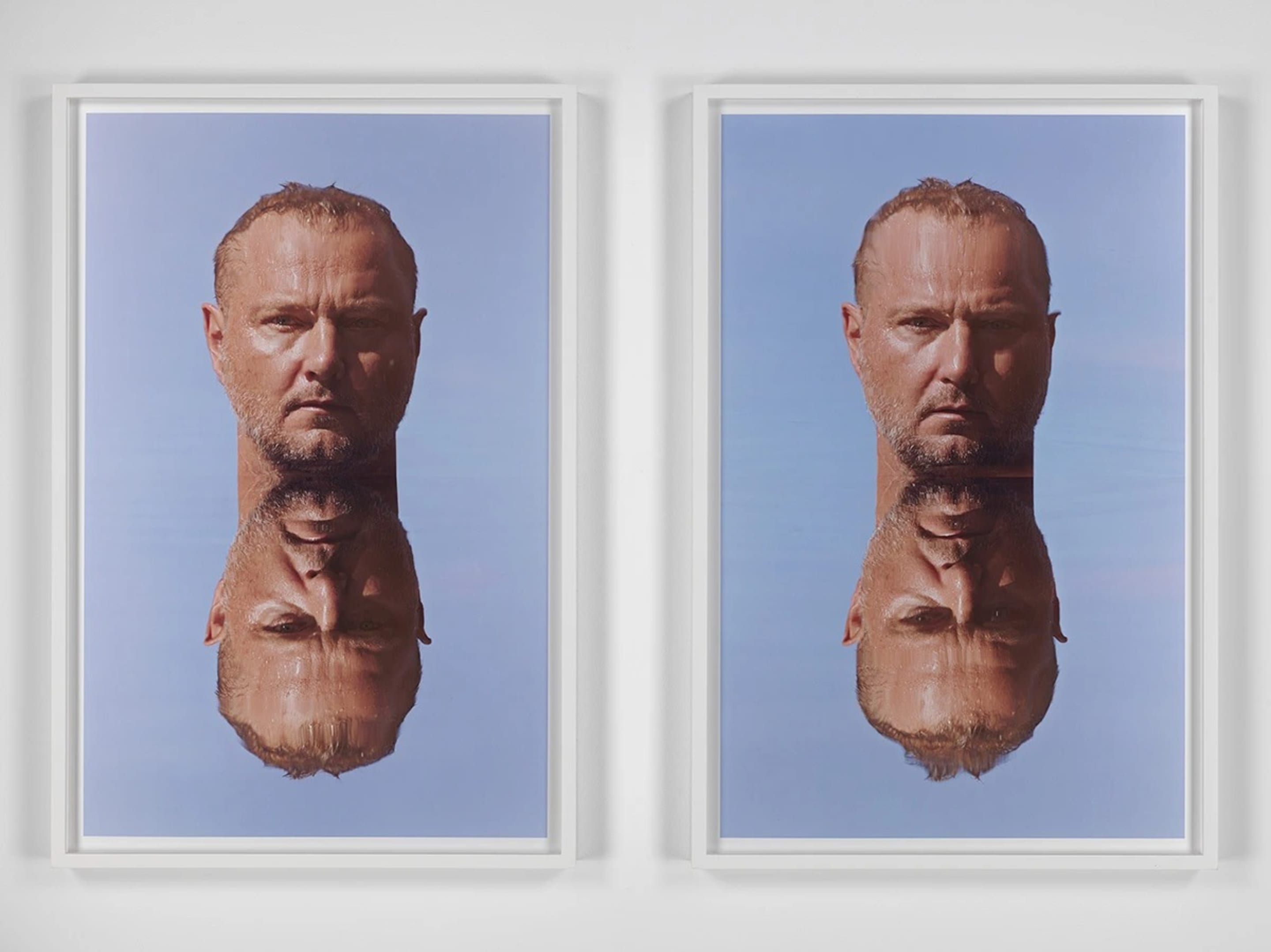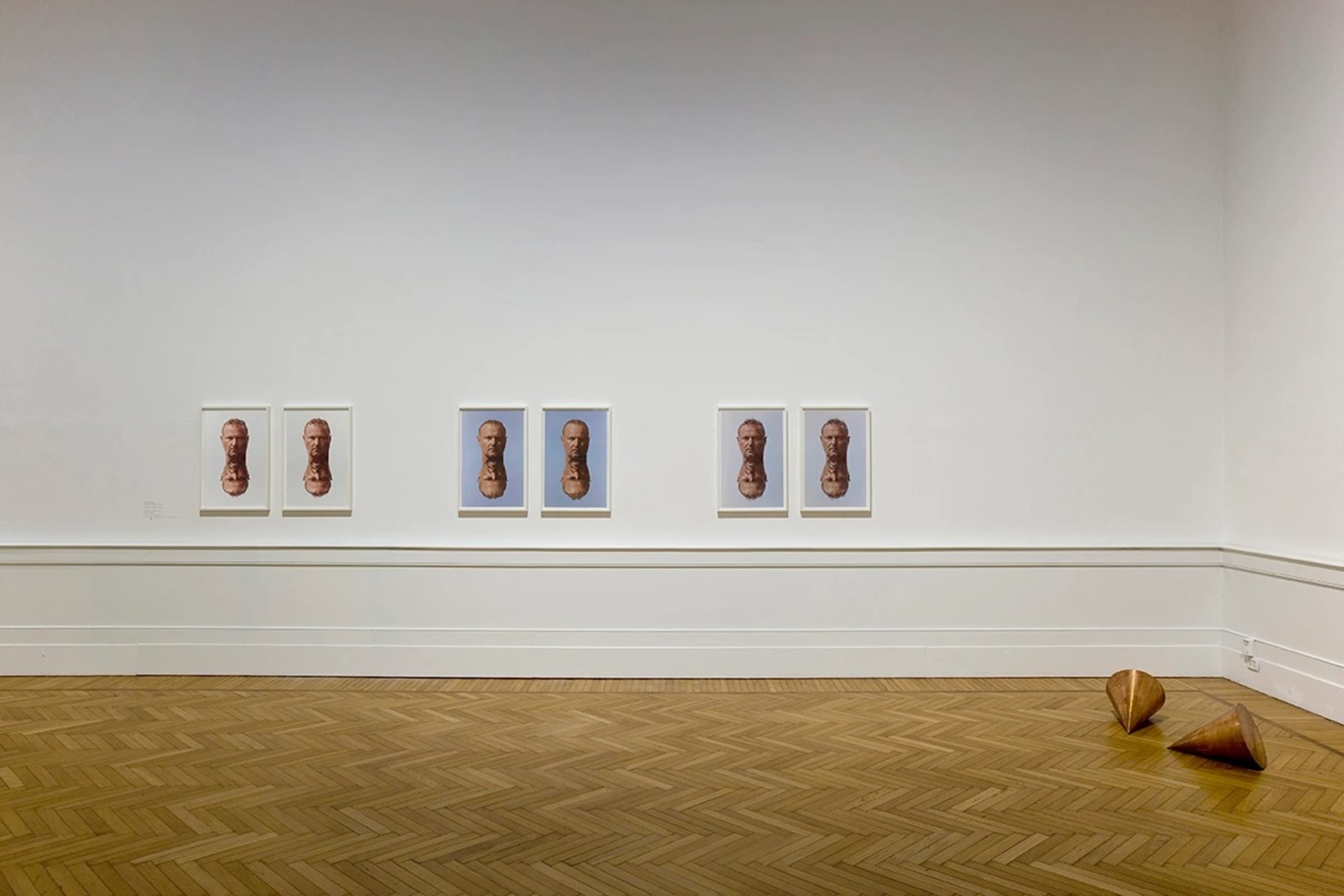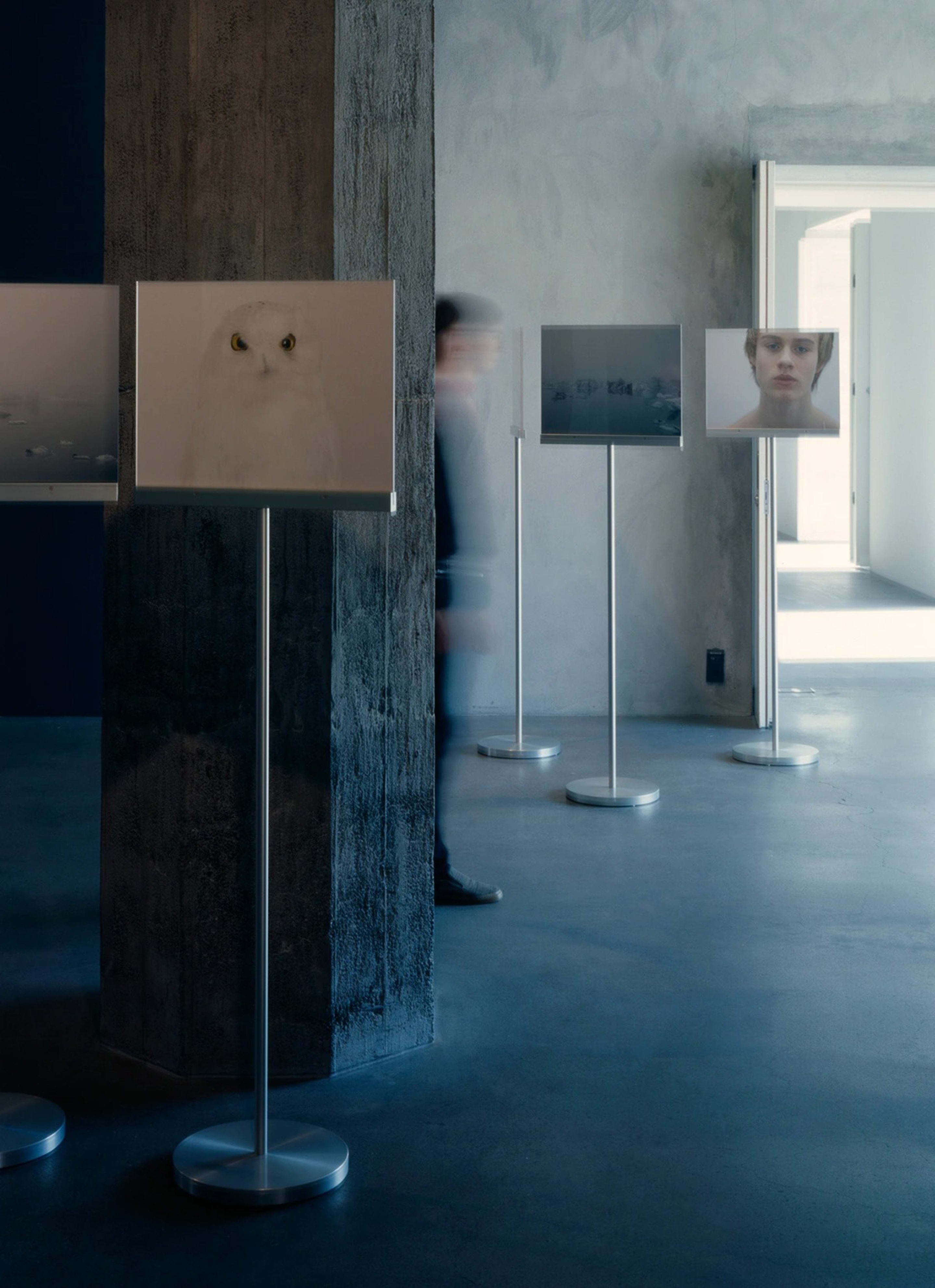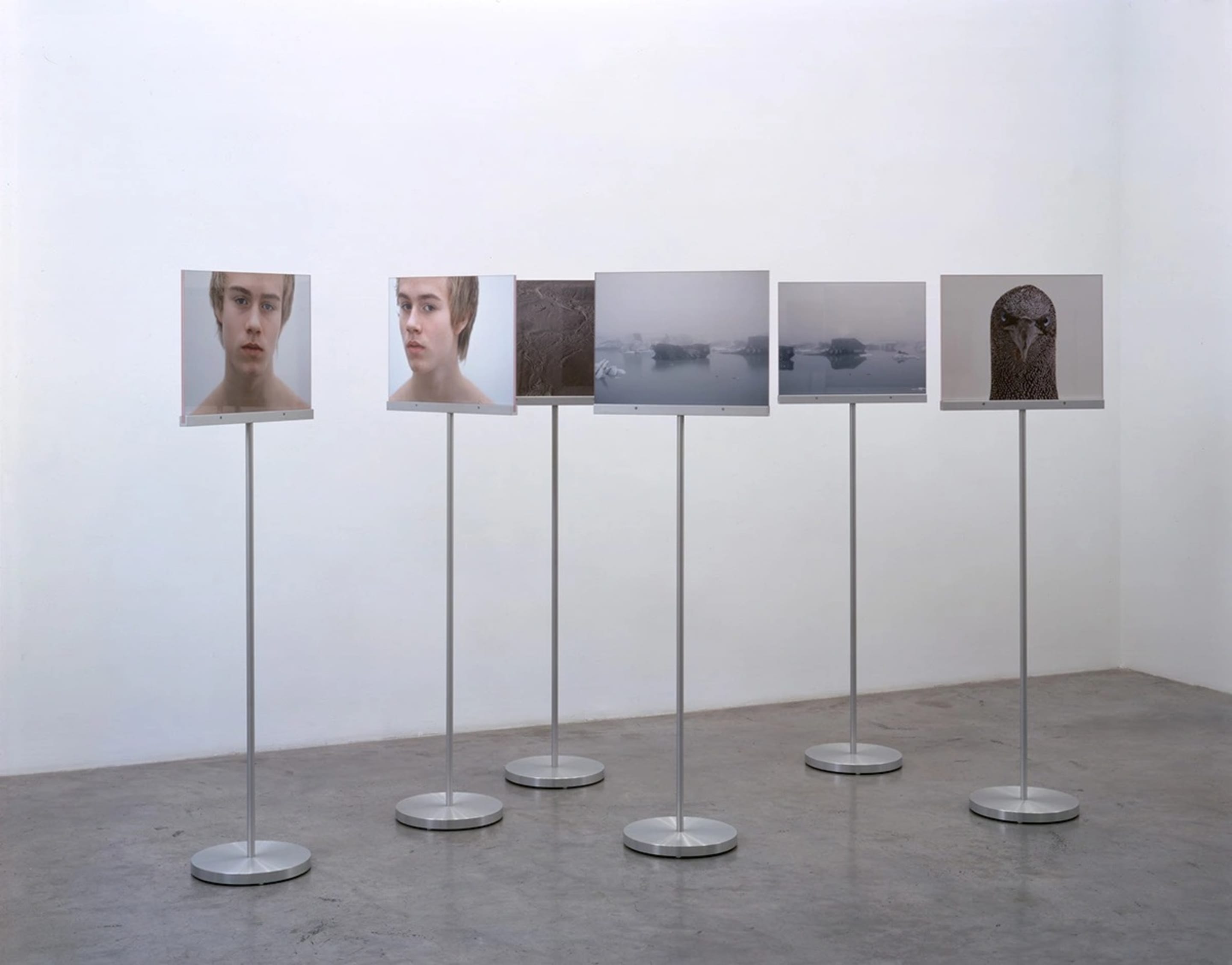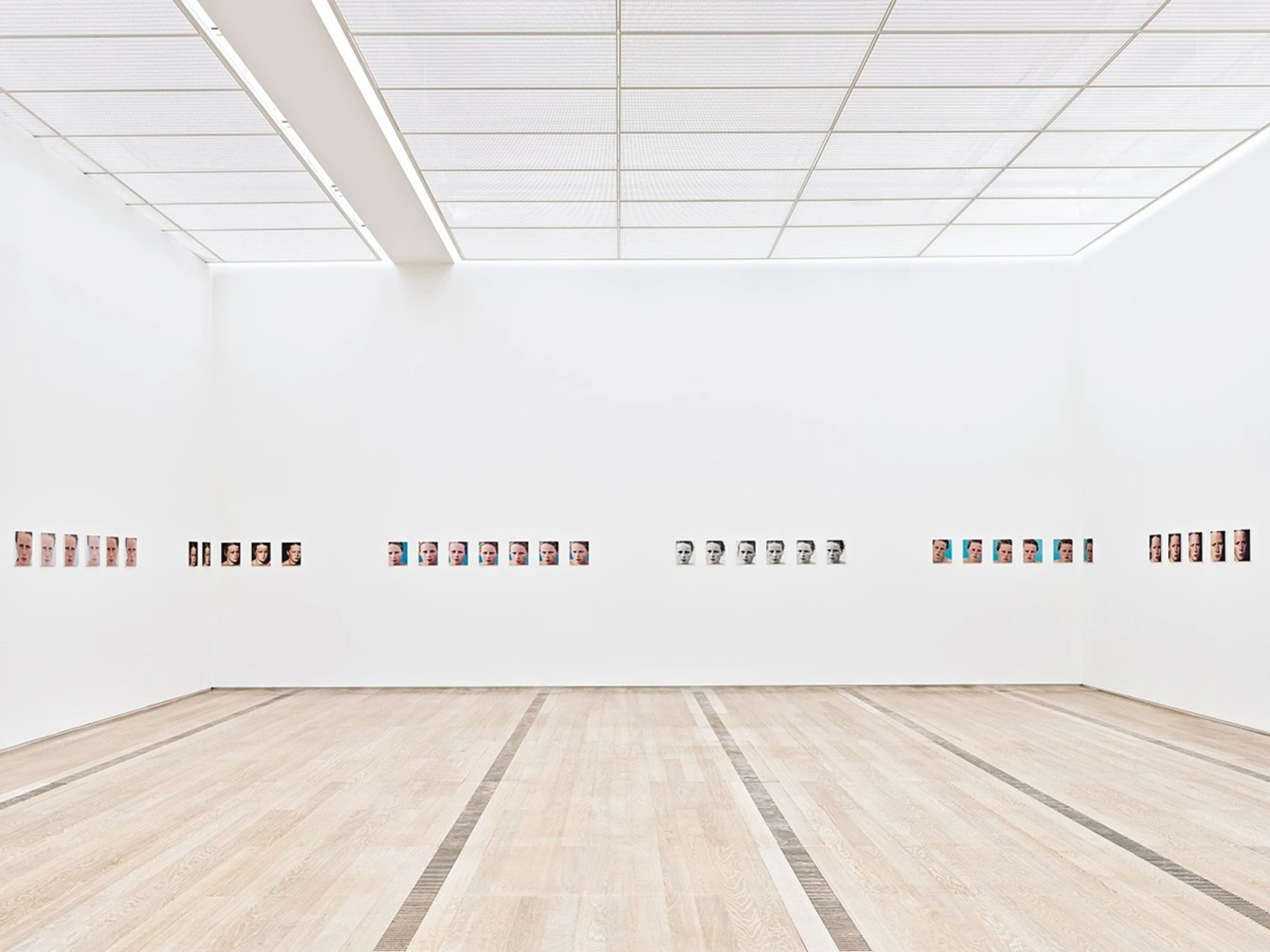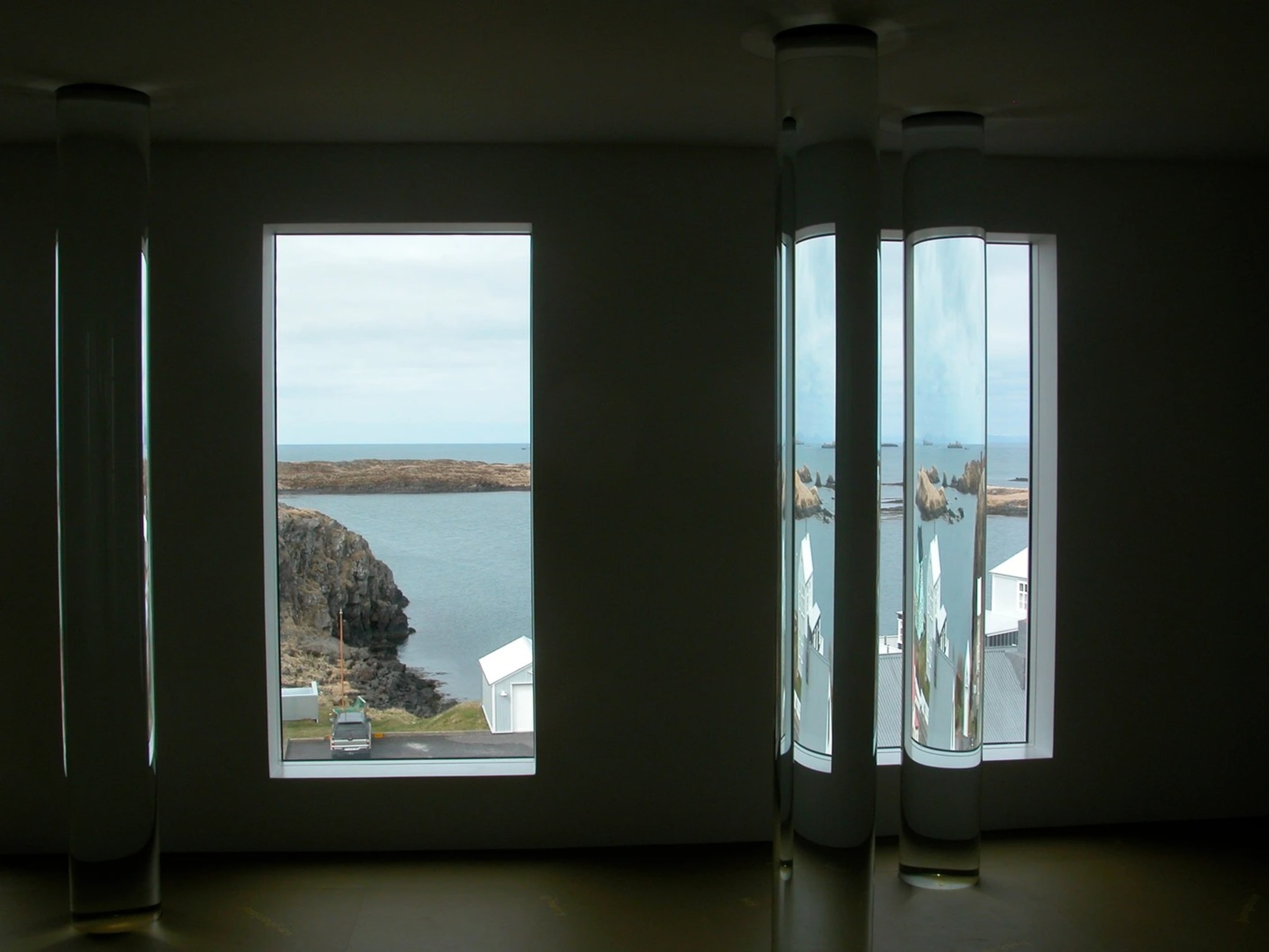What do you know about water? Only that it’s everywhere differently.
(When you see your reflection in water, do you recognize the water in you?)
It’s so easy to project yourself onto water. Its violence, calmness, changeableness are mine (or yours). I can’t separate its moods from my own. But then I don’t really believe they’re separate anyway.
Water is always an intimate experience; you can’t separate yourself from it.
Indivisible continuity is intrinsic to water. This continuity exceeds us even while being the biggest part of us. It’s this continuity that makes our effect on water an effect on us. That is to say: “I am the Thames!” or “The Thames is me”
Can the river dissolve your identity just standing near it, just standing nearby and watching it?
Confused? Lost? Large expanses of water are like desert; no landmarks, no differences to distinguish here from there. (If you don’t know where you are, can you know who you are?) Just tumult everywhere, endlessly. Tumult modulating into another tumult, allover and without end. The chance is so constant, so pervasive, so relentless that identity, place, scale – all measure lessen, weaken – eventually disappear. The more time you spend around this water – the more faint your memories of measure become.
Water is sexy. It’s the purity of it, the transparency, the passivity, the aggression of it.
When I look at water, especially this water, I find myself wondering about it: its mechanics, its poetics, and so on. I wander in my thoughts. I go places. Water is lubricant to other places.
Water is tolerant. It accepts everything that comes to it, and all the things we put into it.
In the River Thames, in an Artic iceberg, in your drinking glass, in that drop of rain, on that frosty window pane in your eyes, and in every other microscopic, microcosmic part of you (and me), all waters converge.
Water is lubricant to other places. It dilutes gravity when you’re in it; it reduces friction when you’re around it. Almost any form of water: rivers, lakes, oceans, even sinks will do. My mind roams freely, breezily near it. My thoughts take me backward and forward; time has no direction near water.
Watching rain fall on water calms and quiets me. I feel the space of the river changed; it becomes more a part of the things around it: a part of the weather, a part of the sky, and somehow more a part of me.
Watching the water, I am stricken with vertigo of meaning.
Water is the final conjugations: an infinity of form, relation, and content. (I never know where I’m standing when I’m standing by the river.)
This water confuses me. When I’m by the river I wonder: Who am I? Where am I? What is this?
Have you ever looked at the river and had the idea that the water is tricky? (Not just the currents but the lure of it, the spell it casts when you come too close?)
A boatman described the tendency of jumpers to stand on the parapet of the bridge and stare down at the water for a while and then let go—face down into the river.
Roni Horn, selected footnotes from Still Water (The River Thames, for Example)
Unpredictable, changeable, and unruly, water has inspired the work of many artists, classical to contemporary. Since the late 1990s through the present, it has been the subject of recurrent reflections in Galleria Raffaella Cortese’s exhibition program.
Its symbolism unites the spiritual life of countless civilizations: it symbolizes rebirth and purification, it is fruitful nourishment, emblem of the feminine principle, but also a potential source of danger for existence and is in turn threatened by mankind.
In the tiny Aedicula in Albisola Superiore, a stone's throw from the Ligurian sea and the Sansobbia stream, at 6pm each evening a light turns on and passersby are invited to stop and listen to Saying Water, the voice of Roni Horn. You can sit on Halte, the bench designed by young designer Thibault Malavieille, getting lost in the most intimate thoughts about water.
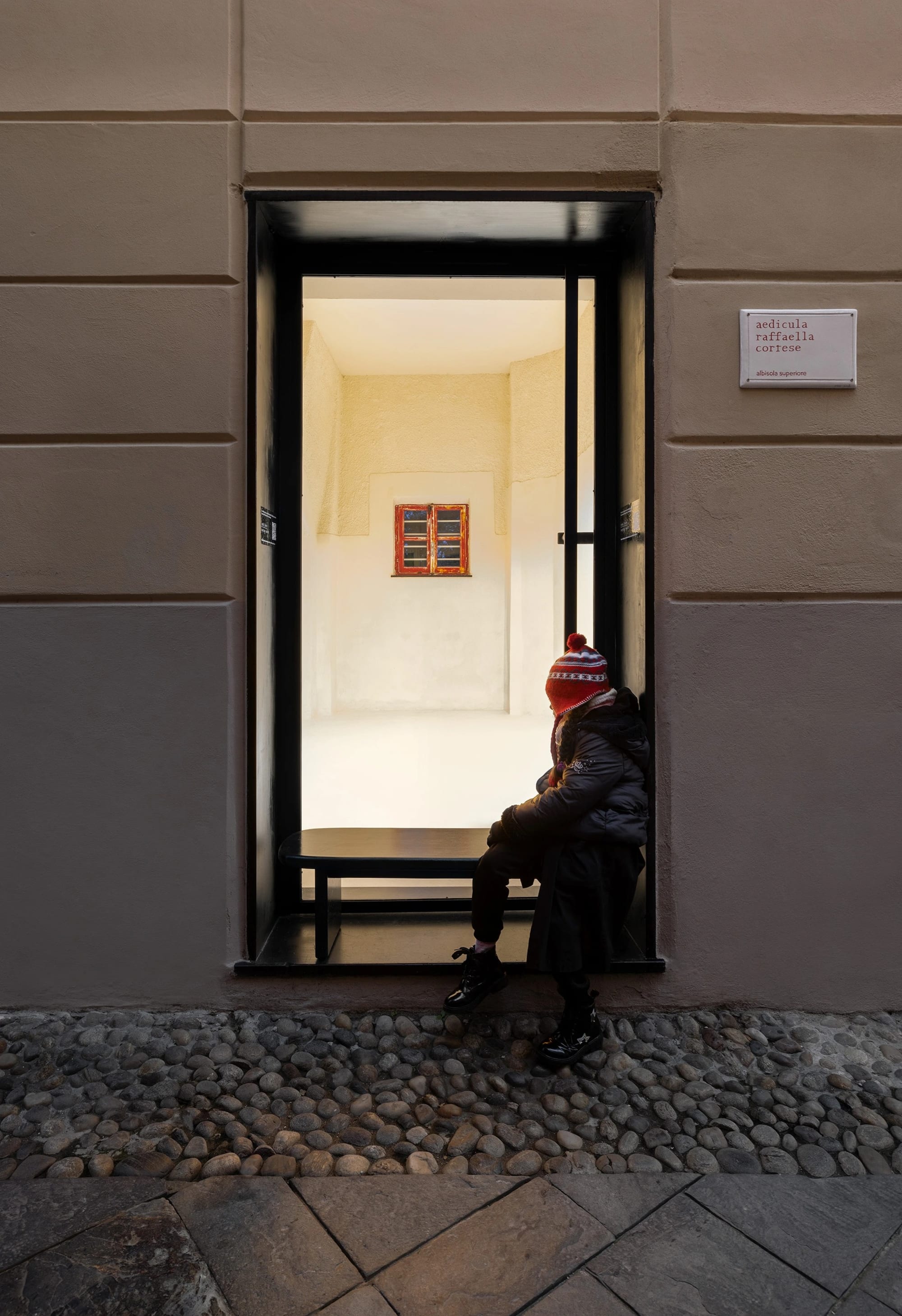
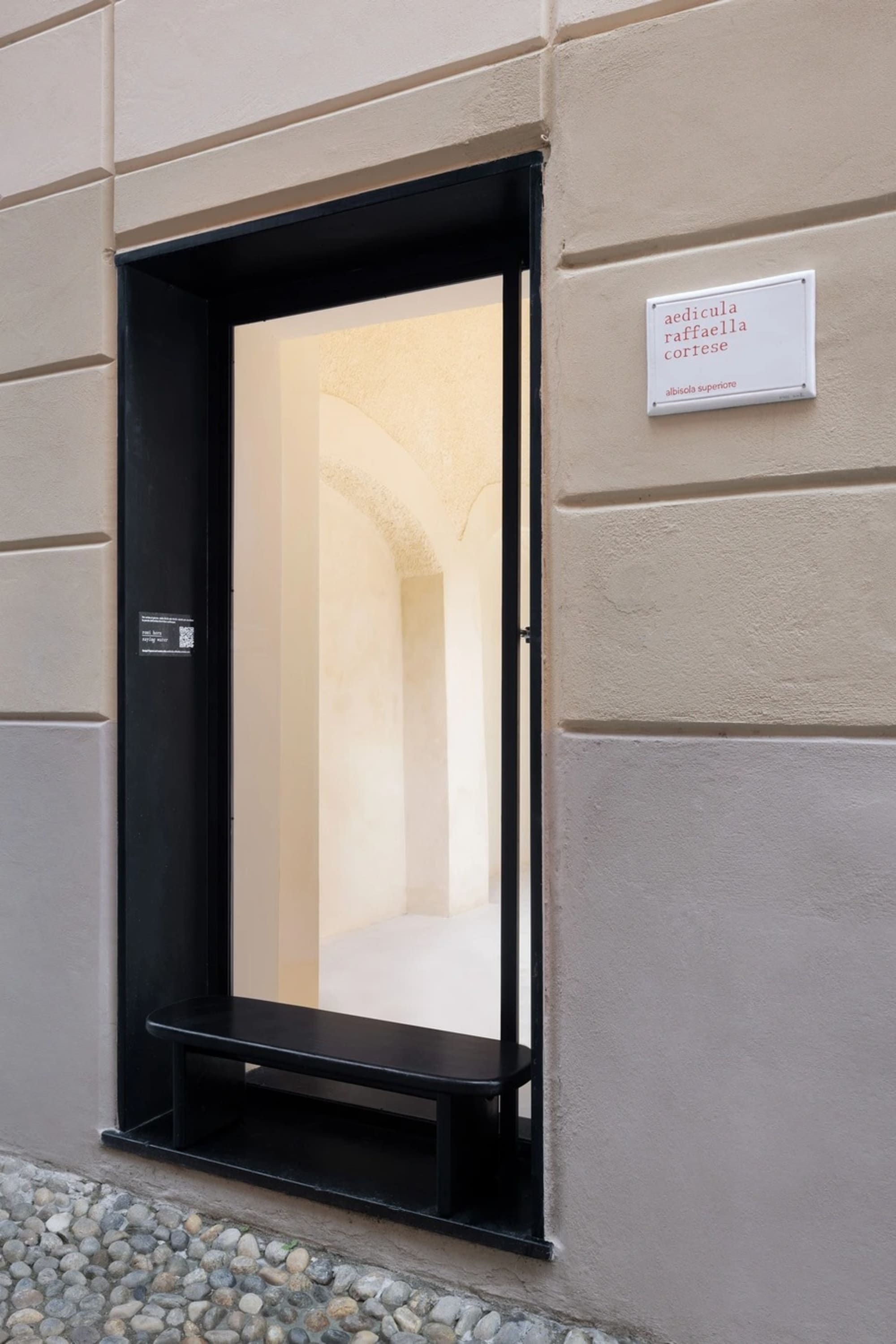
Installation views of Roni Horn, Saying Water at Aedicula Raffaella Cortese, via C. Colombo, 54, Albisola, 2023. Photo: Andrea Rossetti
Saying Water belongs to a body of work which, in its entirety, constitutes a true ode to water, an intense and personal investigation through its many contents, meanings, and metaphors. As a complex, changeable element on which life depends, water determines the weather conditions in which we live, it is the substance that makes up the majority of our body and, at the same time, has a fundamental impact on identity and imagination. As the artist writes, “We cannot talk about water without talking about ourselves”
Roni Horn began collecting the reflections on water we hear in Saying Water in the 1990s. They are phrases conceived by the artist herself or quotations of various kinds – for example, from the poems of Emily Dickinson, from a novel by William Faulkner, from a film by Michelangelo Antonioni, and from the songs of Aretha Franklin. We also find them in another fundamental, earlier work, the suite of fifteen photographs Still Water (The River Thames, for Example) (1997-1999). Each image depicts a small portion of the surface of the Thames, all characterized by different colors and light, by the water’s particular ripples. As we get closer, we enter a second, deeper level and recognize a series of small numbers on the surface of the river. In each print, the numerical characters direct our gaze towards the lower margin, which is populated by a number of footnotes.
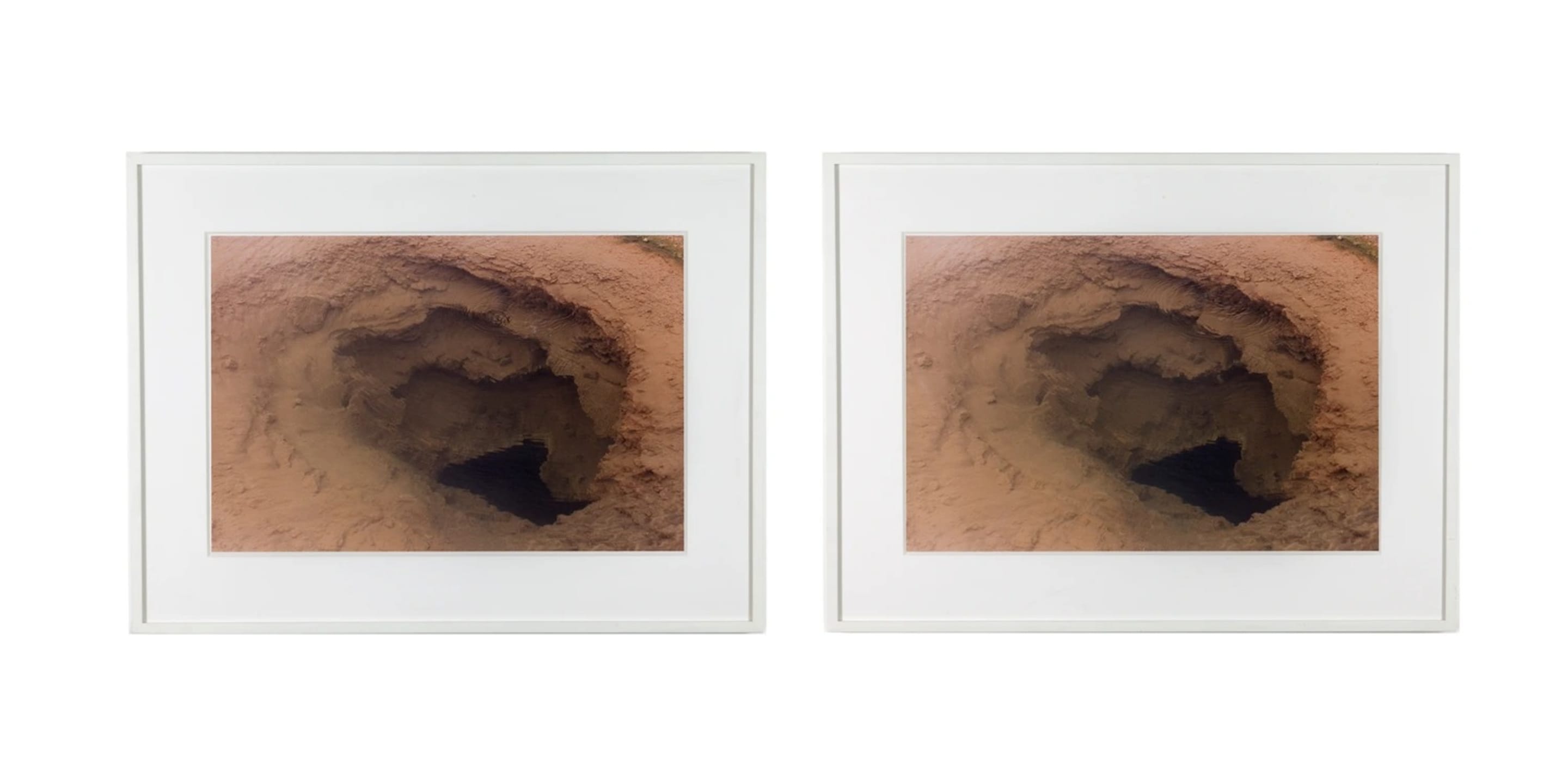
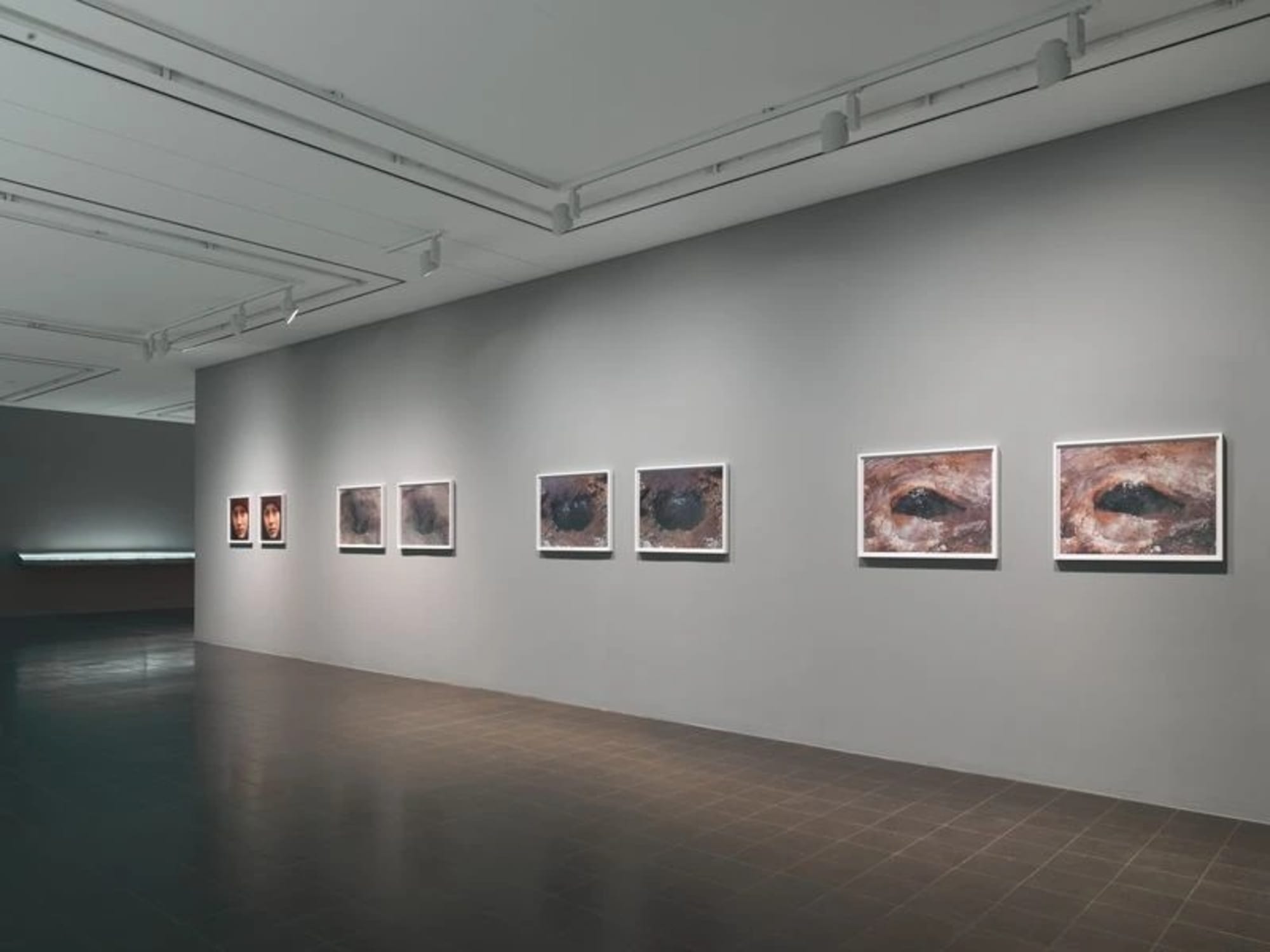
Installation view of Photographien at Hamburger Kunsthalle, Germany, 2011
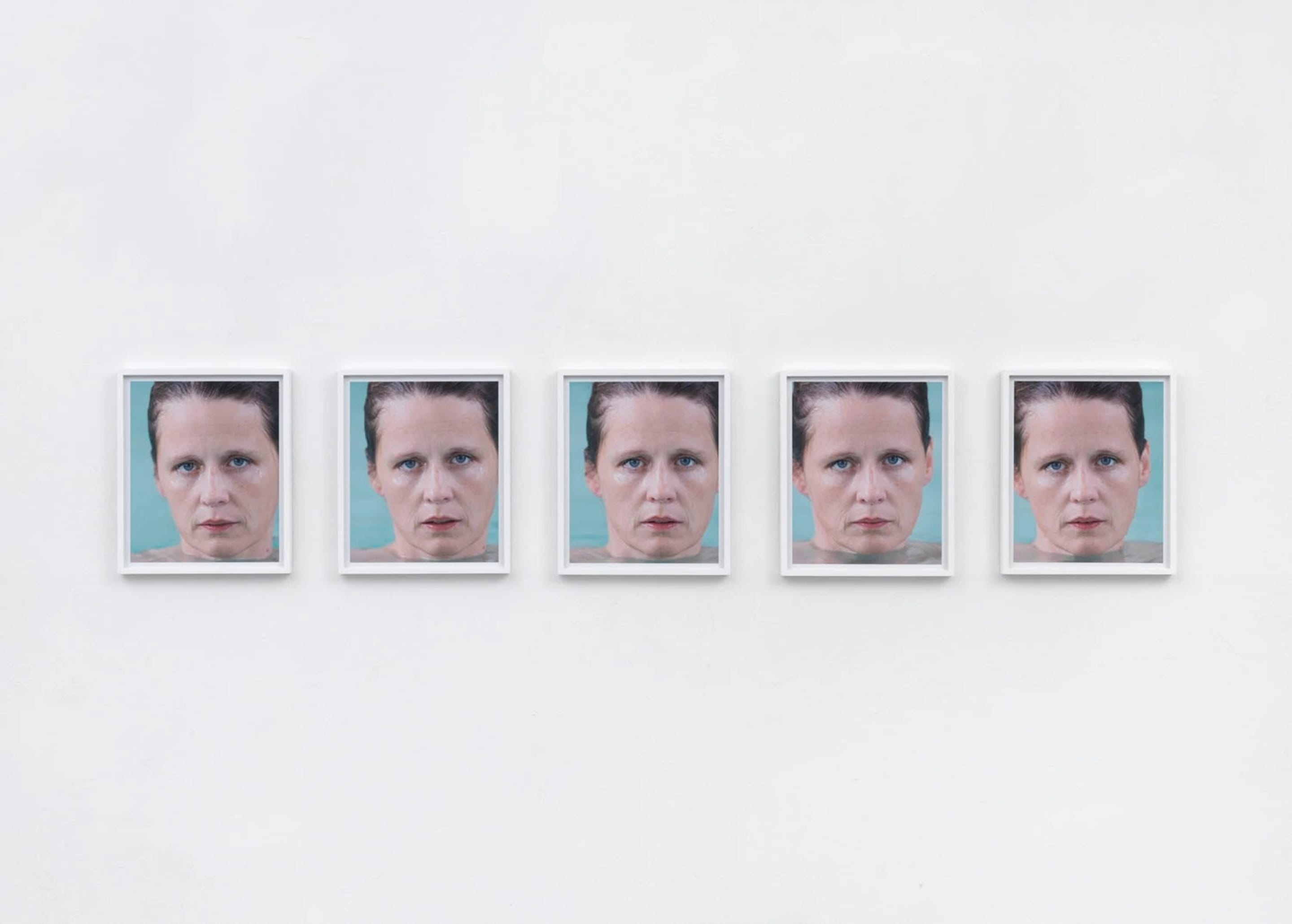
Inkjet / pigment print on paper: 5 COLOR PRINTS, mounted on sintra
31,11 × 26,03 cm; 32,5 × 27,2 × 2,5 cm framed; 178,68 cm from the floor, all prints with 10 cm between
Ed. 4 +1 AP
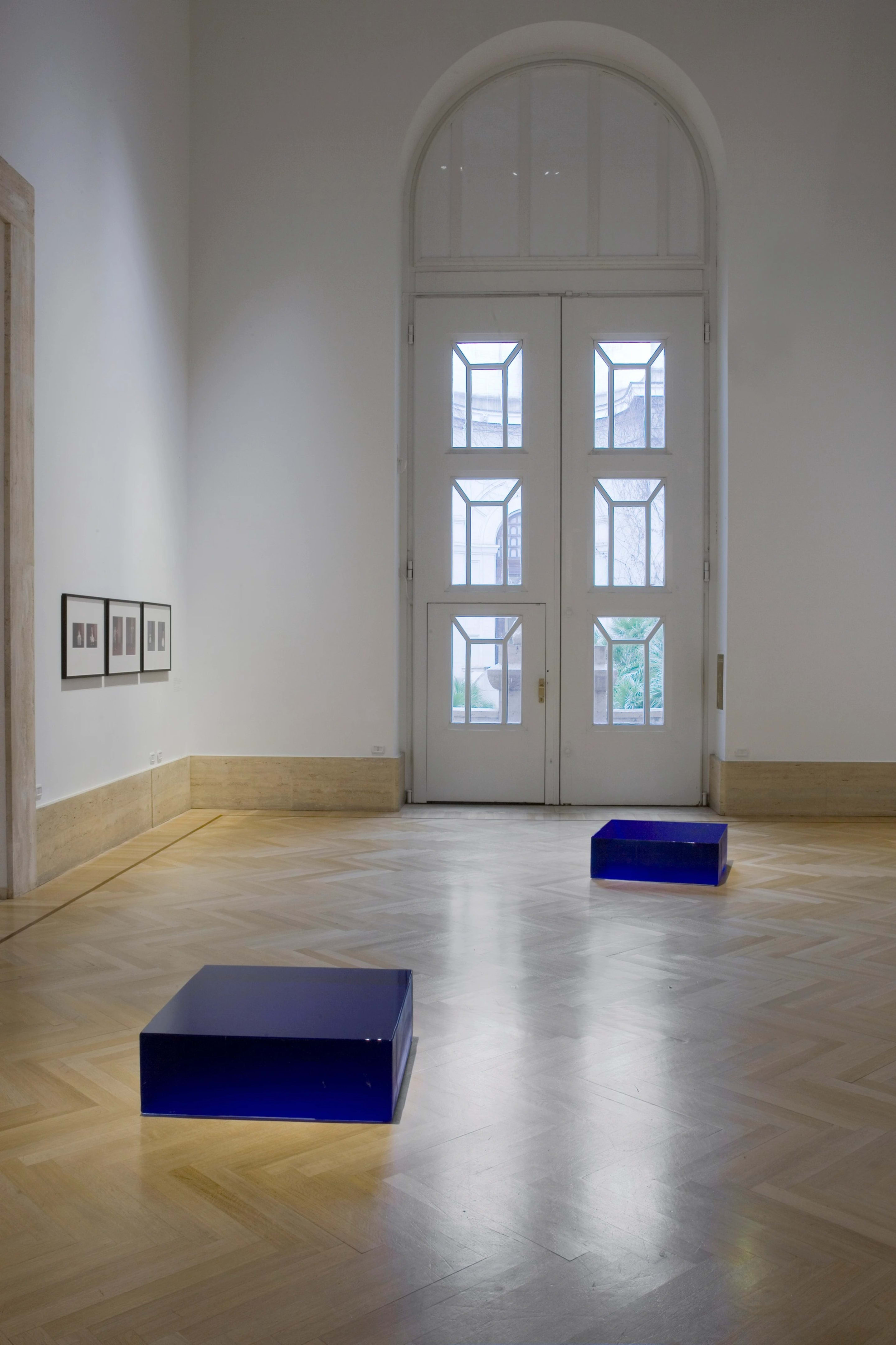
Courtesy: Galleria Nazionale d’Arte Moderna, Roma
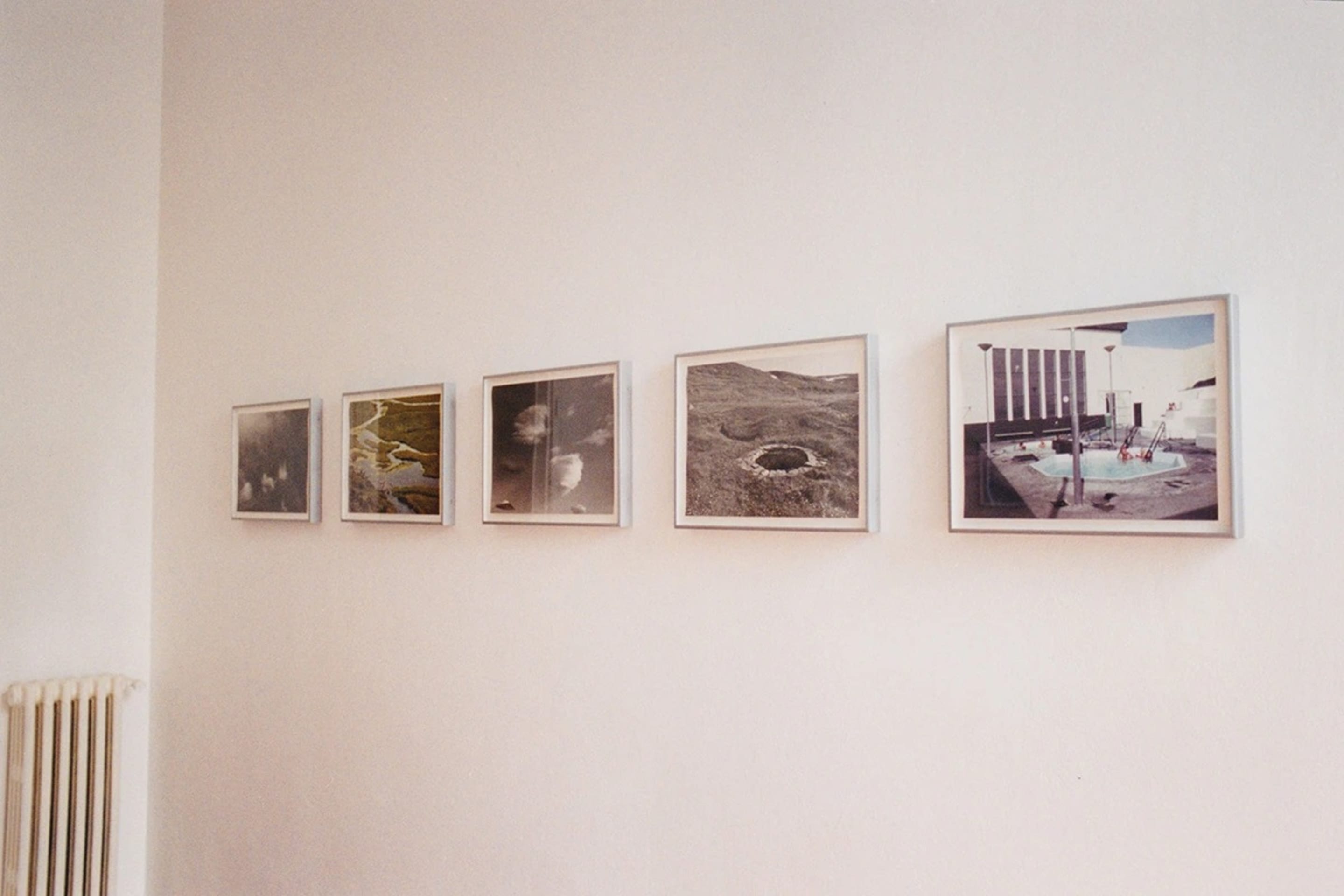
Hot Water Suite (3) (1991-93) by Roni Horn in a view of her first show in Galleria Raffaella Cortese, in via R. Farneti 10, Milan
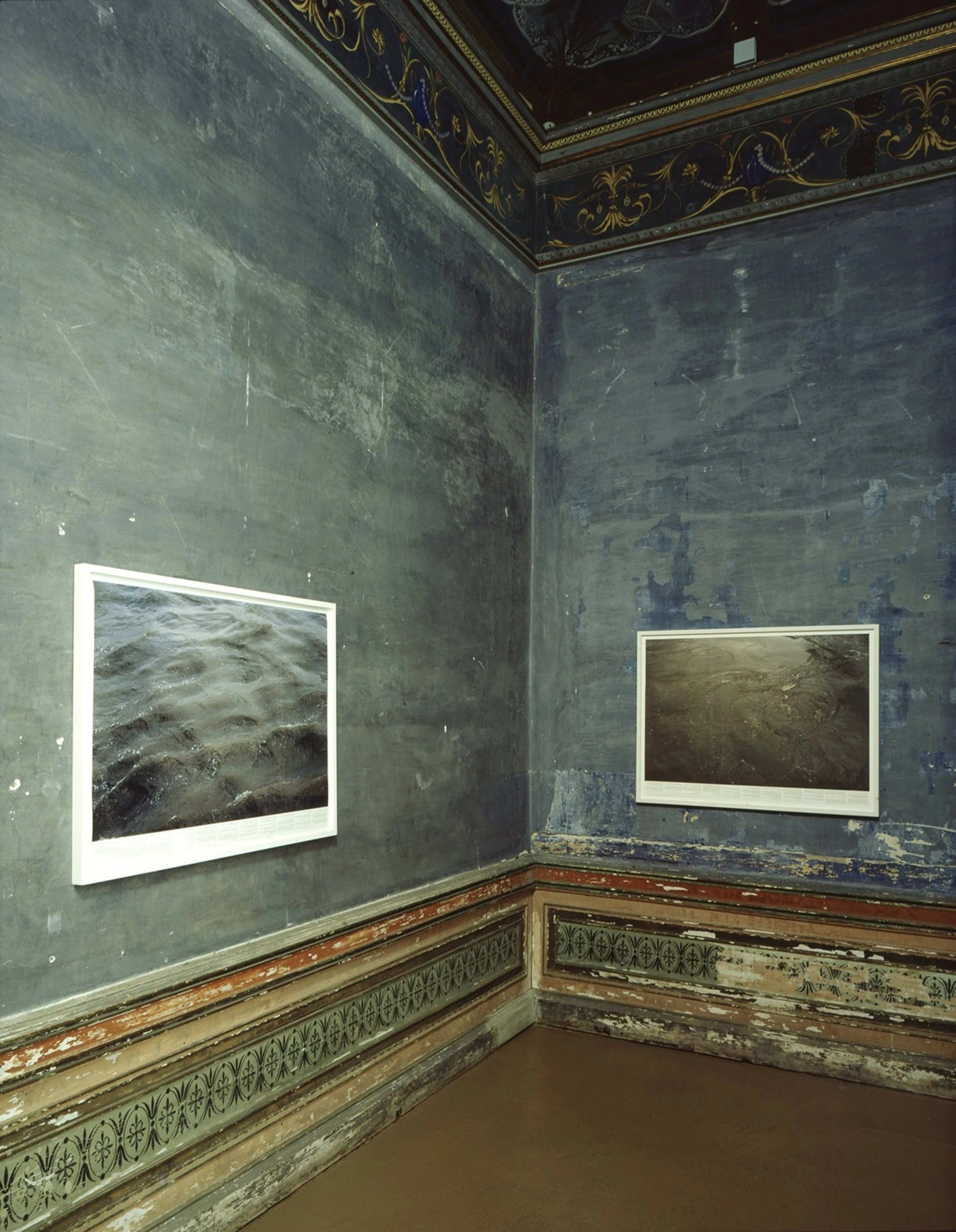
Installation view of Still Water (The River Thames, for Example) at Castello di Rivoli Museo d’Arte Contemporanea, Rivoli-Torino
You stand back and see the photograph from some distance and have that visual experience. Then you move in on the photograph to see the detail and at that point you start to see the numbers floating in the water and you’re able to read the footnotes. In this moment you’re going from a horizontal to a vertical view. In going vertical, it’s like going into a well, going into something. And in this case the footnotes provided a precise metaphor of entering that space in a vertical sense. That’s how I was thinking of “Still Water” - what happens when you can just stand there and effectively go into deep space.
I began writing the notes for Still Water a year before I started photographing the Thames... Much of it was written as reverie, my reverie, evolving quickly into a manic, obsessive, endless flow of consciousness, and finally becoming a litany with chorus-like elements... I wrote these notes in the solitude of myself but I did so anticipating your arrival. A triangle is formed between you, me (the voice in the footnotes) and the photographs. All three elements are inextricably bound together in the act of experiencing the work.
Roni Horn
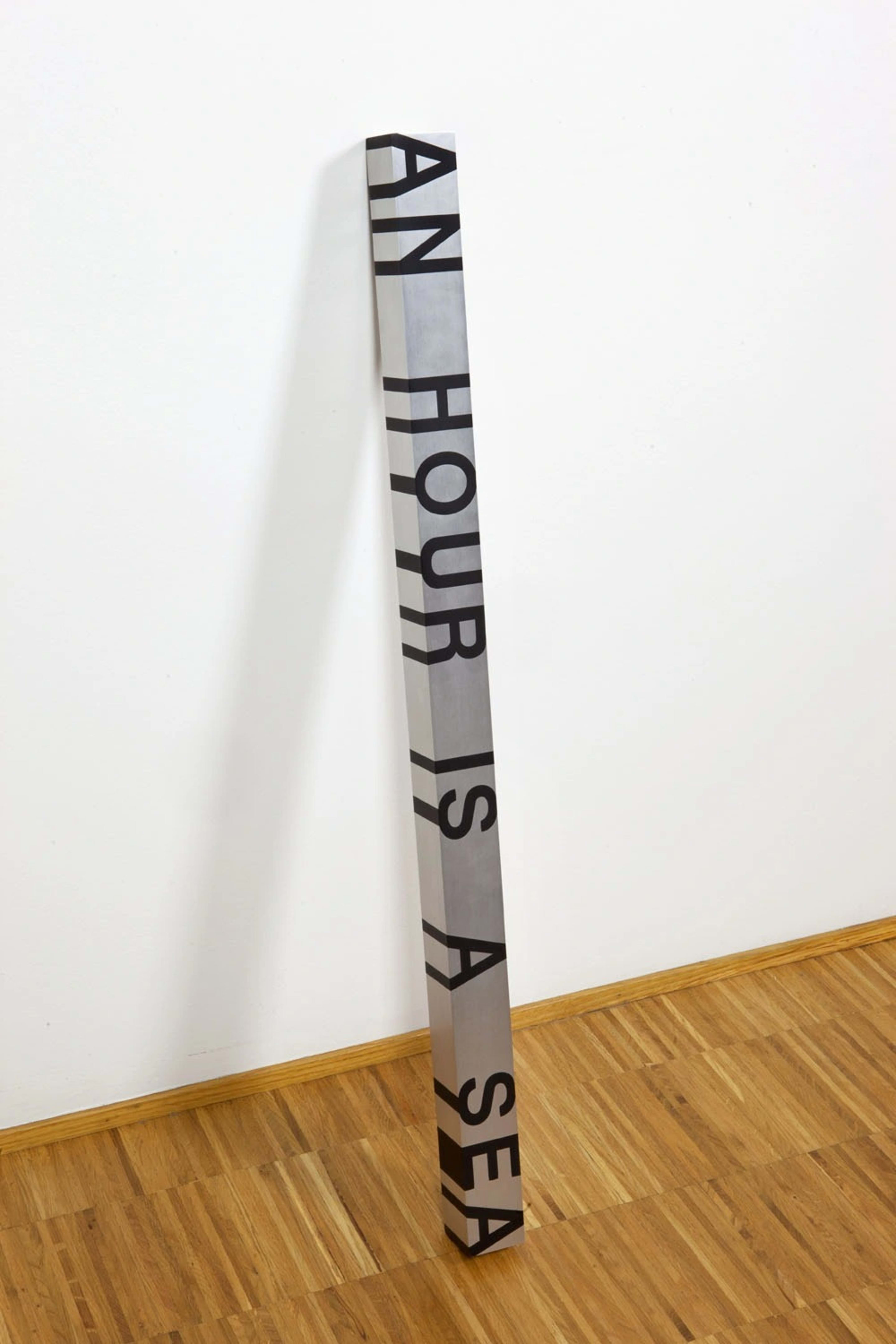
An hour is a sea marks my first meeting with Roni Horn in New York, in 1997. I remember the intensity of her gaze, and – immediately after – seeing this extraordinary sculpture. From that moment I have never been separated from it, nor from her. I left the studio with the work in my arms and every day it marks my coordinates.
R.
Produced by Dia Center for the Arts, New York.
Recorded by Alex Notes at Mercer Media, New York.
Edited by Neil Benezra.
© Roni Horn
